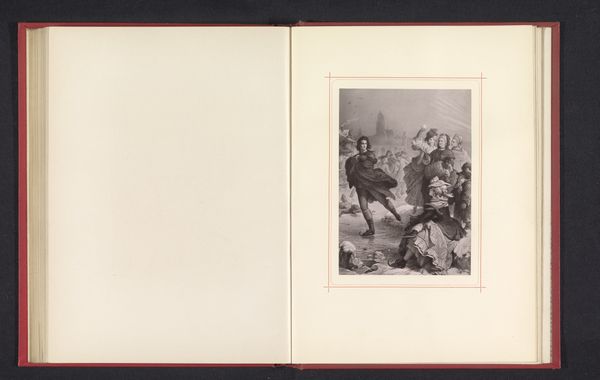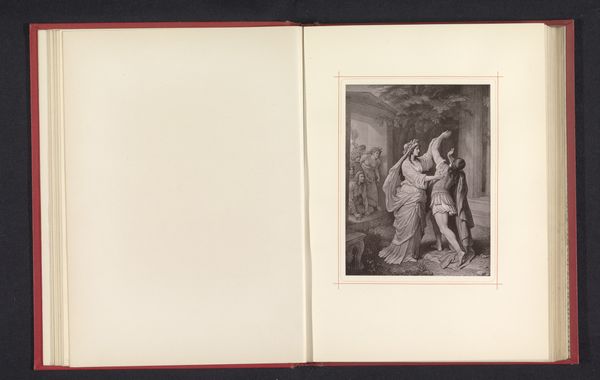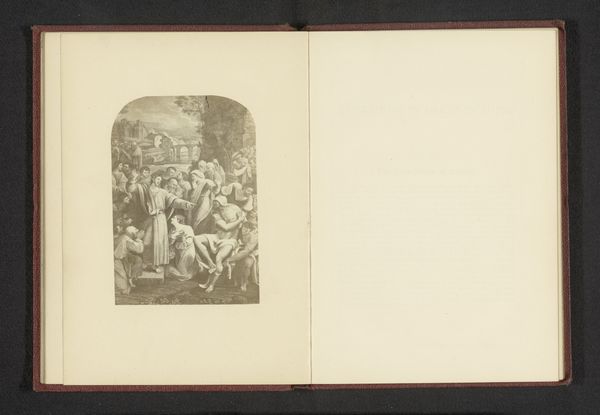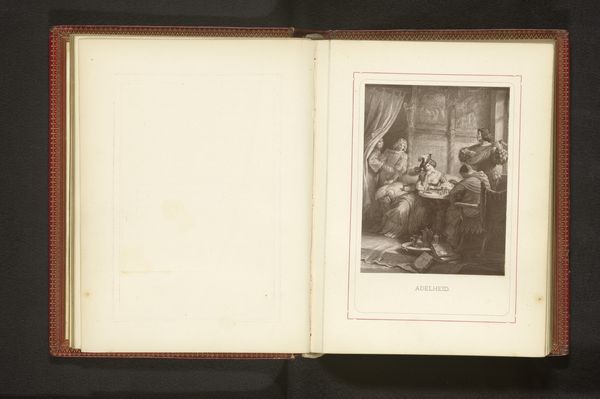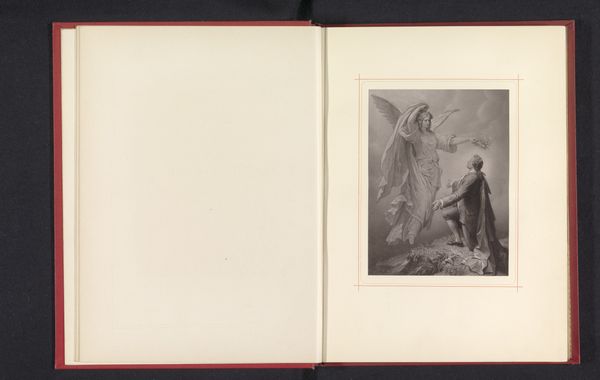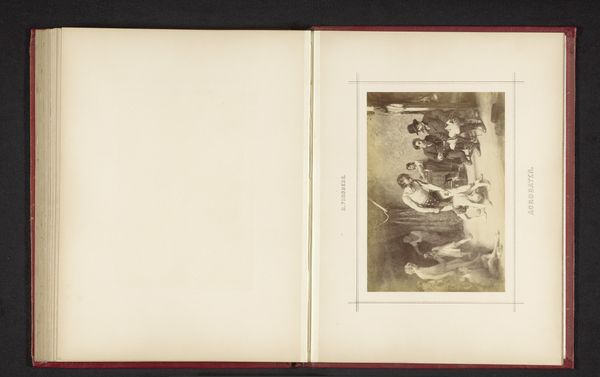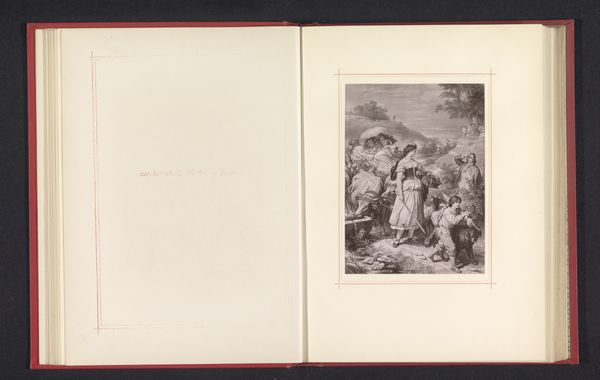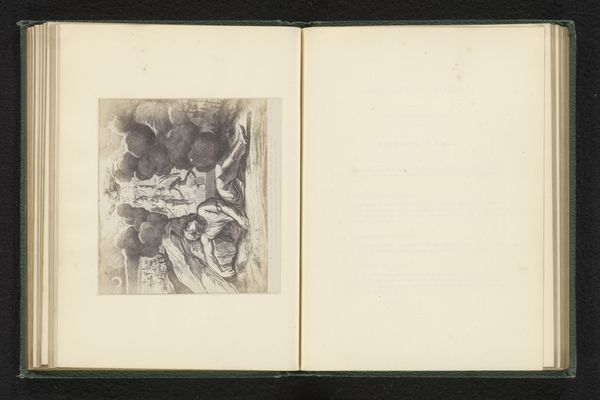
Fotoreproductie van een tekening, voorstellende Clärchen spoort de inwoners van Brussel aan c. 1875 - 1885
0:00
0:00
anonymous
Rijksmuseum
print, engraving
# print
#
figuration
#
history-painting
#
academic-art
#
engraving
Dimensions: height 164 mm, width 130 mm
Copyright: Rijks Museum: Open Domain
Curator: This print, held in the Rijksmuseum's collection, is titled "Fotoreproductie van een tekening, voorstellende Clärchen spoort de inwoners van Brussel aan," dating roughly from 1875 to 1885, and the medium appears to be engraving. Editor: Immediately, what strikes me is the strong chiaroscuro effect—the dramatic interplay of light and dark creates a palpable sense of urgency and tension within the scene. It speaks to a moment of heightened drama. Curator: Absolutely, and the artist, whose identity is unknown, employed a style we recognize as academic art. Notice how the artist renders this image to highlight an instance that evokes the power of feminine persuasion for cultural transformation. Editor: I'm curious about the printmaking process of the time. Considering this was a reproductive engraving—a photograph reproduction of a drawing—how would the labor and cost involved impact the accessibility of such images to a wider audience? Was this meant for mass distribution, or more elite consumption? Curator: An interesting question. Considering the cultural memory of the scene—a figure rousing the citizens of Brussels—this image likely sought to reinforce certain historical narratives, contributing to a shared national identity. Clärchen serves as a potent symbol of courage and patriotism. Editor: Right, and it appears her action leads to emotional instability for the onlookers, or maybe their position already suffered instability. One can observe the process involved is laborious, but there are questions on the materials' acquisition. How do material circumstances determine the narrative and shape cultural understanding through circulated prints? Curator: We are led to contemplate questions on the intersection of artistic intent, material production, and the formation of cultural narratives, thus emphasizing symbols and emotions—allowing us to re-imagine history anew. Editor: Ultimately, delving into the production and distribution of this engraving sheds light on how historical narratives were materialized and consumed by various segments of society.
Comments
No comments
Be the first to comment and join the conversation on the ultimate creative platform.
